Resources
This paper reports on a project undertaken as part of a wider group exploration of feminist pedagogy. It reflects on the issues this raised in teaching a course on contemporary biblical criticisms, an area of biblical studies where questions of power and ideology are frequently asked of texts. The project therefore asked the question whether there was a match or mismatch between the teaching process and the content of the course. Of particular concern was the understanding of the role of the teacher, the lecturer's 'what am I doing in this class?' question. The move to open up the student space led to the matter of boundaries. Who decides upon and regulates the limits of what can be discussed? What allows trust in a class and how does one deal with feelings and emotions? This paper engages the class members on all these issues, drawing on their comments gained from the questionnaire that was part of the project design.
The author describes her participation in a religious studies teaching workshop where she was asked to think creatively about the art of teaching, what implications result from changes in the field, and the relationship of religious studies to other fields. General conclusions endorse pedagogies that are dialogic, participatory, and experiential and invite possibilities provided by changes in the field that encourage courses that are more inclusive of marginal voices and attentive to multicultural inflections. In assessing the relationship of religious studies to other fields, the author draws on her interdisciplinary background in religion and literature to apply Aristotelian rhetoric to the interpretation of a short story, thereby providing an actual model of how disciplines can complement each other while also highlighting aspects of the pedagogical and multicultural principles endorsed by the workshop participants. The application of Aristotelian principles of logos, ethos, and pathos becomes for the workshop participants a religious studies rhetoric: a provisional model for how to interpret classroom conduct.
Journal Issue.
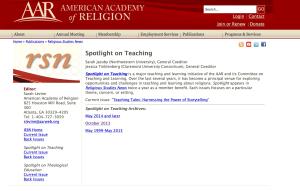
Journal Issue. (This issue, and all "Spotlight on Teaching" issues prior to 1999, are not available on the AAR website.)
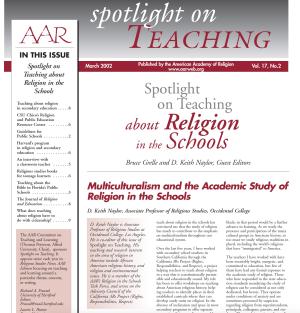
Journal issue. Full text is available online.
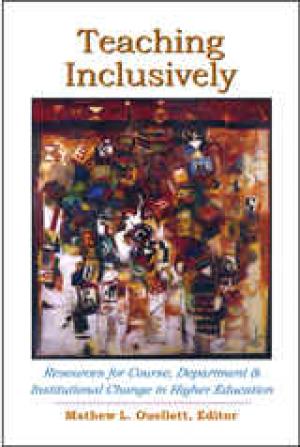
Teaching Inclusively brings together a broad array of current "best practices" in the design, implementation, and assessment of multicultural change initiatives on college and university campuses. Readers will find that this volume advocates for more transparent connections between change initiatives at individual, departmental, and college-wide levels by highlighting the ways in which such practices and change goals can relate to and support each other, thus addressing a noticeable absence in the current available literature. The contributors to this volume present readers with a balance between theoretical models and demonstration projects that address change processes at three levels: individual courses, programs and departments, and across schools and institutions. In addition, there are descriptions of current, multi-year or multi-phase efforts at both departmental and organizational levels. Whenever possible, the contributors include their perspectives on important lessons learned from their efforts. Finally, we offer resource materials that promise concrete support for applications. Part I addresses models and perspectives that help to conceptualize, implement and assess diversity-related instructional and faculty development programs at the systemic level. Contributors offer models and descriptions of practices aimed at making transparent the values, beliefs, and goals that shape institutional and classroom climates. Note that in the context of this volume, "diversity" is deliberately defined broadly to encourage a more systemic approach to the analyses of and response to diversity-related issues. For many readers, this may offer new dimensions and greater texture to their current conceptualization of diversity. This section reflects the contributors’ interests in analytical tools and organizational frameworks useful in addressing individual, departmental, and institutional changes. Whenever appropriate, authors in this section identify a range of practical applications, such as course-based efforts in the major to courses that fulfill general education requirements. In Part II, contributors describe change initiatives that use departments (or programs) as the unit of analysis for diversity-related change efforts. In this section, readers will benefit from the descriptions and assessments of programs designed specifically to bring faculty and academic administrators together in cohorts to address diversity and teaching development goals within the disciplines in a sustained dialogue on diversity. Assessment of current efforts indicate that such initiatives illuminate the content, skills, and values necessary for sustained change and that such experiences can become important models for broader institutional change efforts. In Part III, the contributors discuss multicultural change efforts at the college or institutional level directed at creating and sustaining more inclusive teaching and learning communities. Additionally, contributors describe programs and practices useful in addressing diversity issues across the disciplines as well as within discipline-specific contexts. Particular emphasis is placed on understanding how can systematic multicultural organization change initiatives can support a departmental or campus-wide emphasis on teaching inclusively. These chapters offer rich descriptions of efforts at institutions learning how to address diversity-related initiatives in a sustainable, comprehensive manner. Such efforts can help others determine how best to assess their organization’s needs and strengths, and to determine what is needed in the larger environment to initiate and sustain successful pro-equity organizational change and innovations. Finally, Part IV pays particular attention to resources and program models particularly useful for faculty developers and centers. Contributors to this section provide a rich set of tools for self and course assessment, planning for new or revised programs, and suggesting well-proven strategies for approaches to diversity-related teaching development and organizational change initiatives. These include descriptions of specific, "hands on" consultation practices, workshop exercises, resource materials, and design elements (e.g., use of writing prompts) proven effective across the disciplines in engaging faculty in reflection, analysis, dialogue and innovation related to diversity-related teaching development goals. (From the Publisher)
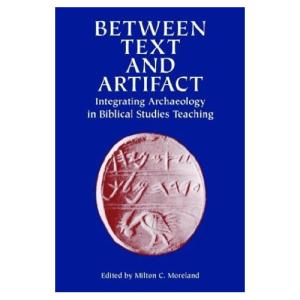
Though researchers in both Biblical studies and archaeology have finally recognized the contributions they can make to each others' disciplines, the integration has been difficult to transfer to teaching, so that future scholars will not have to keep climbing over the same wall every generation. Teachers of history and religious studies share some of the approaches they have used to solve the problem. (From the Publisher)

Blea provides a synthesis of the women's history of Native Americans, Asians, African Americans, and Latinas, and she examines the similarities and differences among these women. From each she extracts suggestions on ways to promote racial and ethnic tolerance. (From the Publisher)
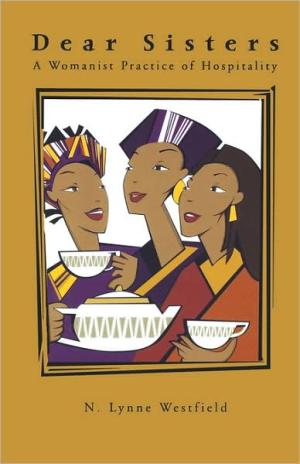
From the Publishers What allows African American women not just to survive, but to become resilient? N. Lynne Westfield finds an answer to this question as she examines the Dear Sisters' Literary Group. As a Womanist scholar, Westfield reflects on the ways in which the hospitality of the group relates to the long-standing African American tradition of concealed gatherings, the Christian tradition of hospitality, and Christian education.